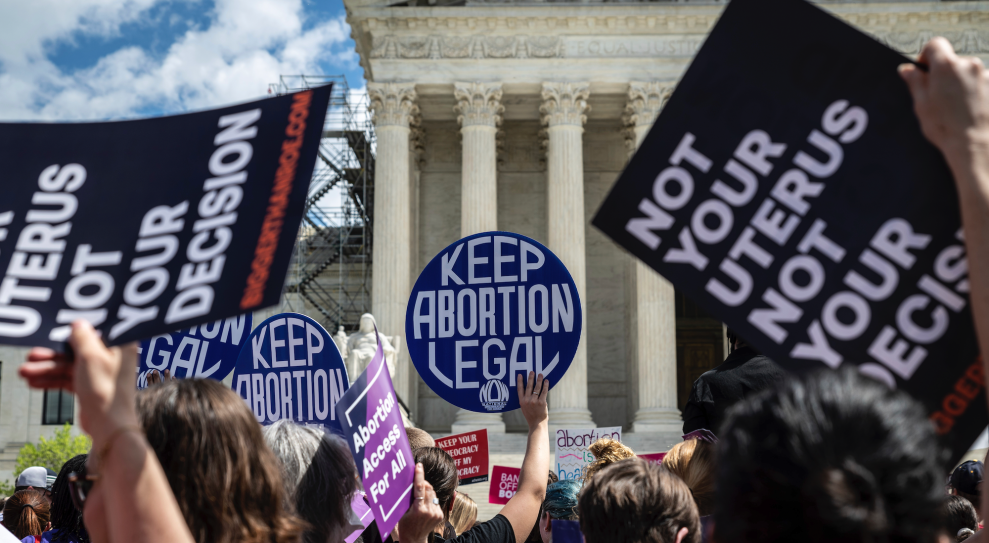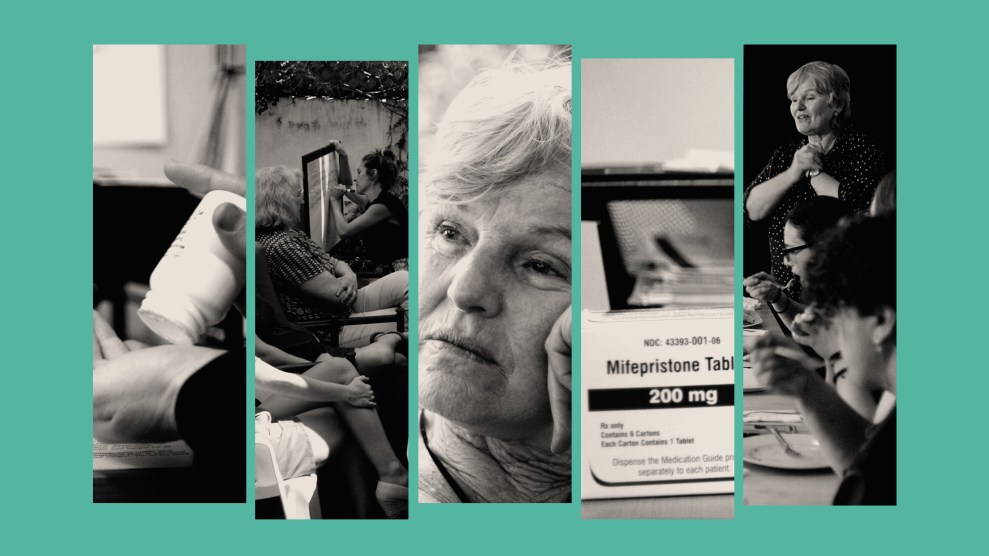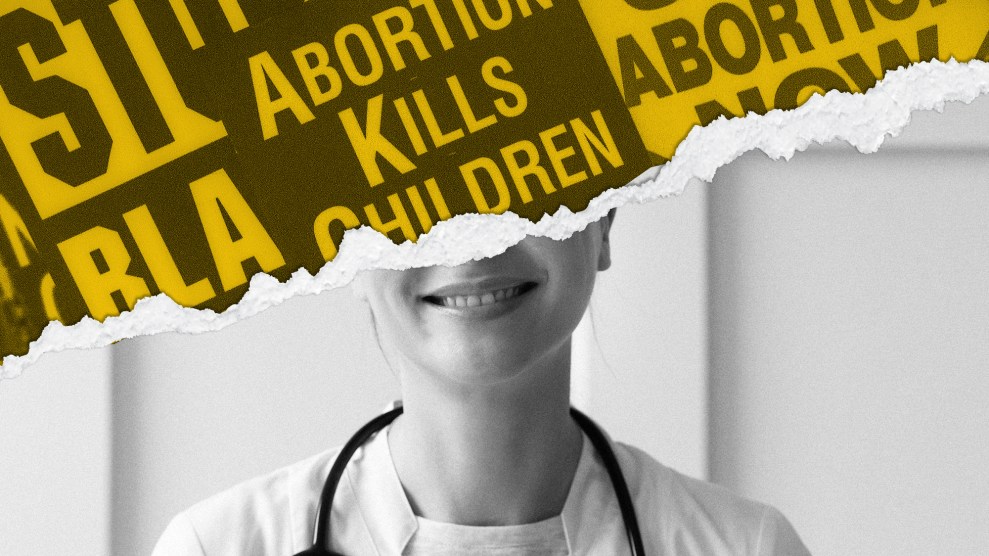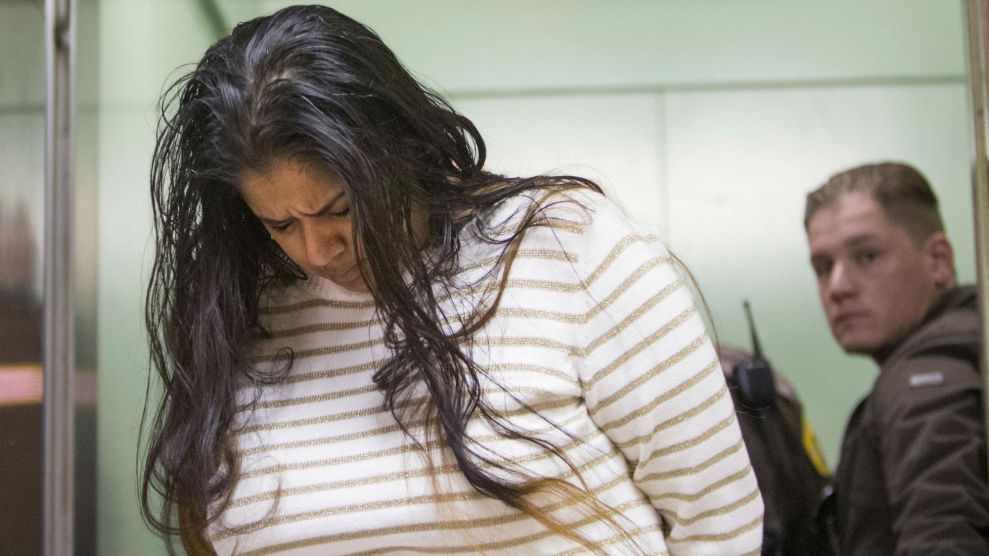
Alejandro Alvarez/AP
In 2013, an Indiana woman showed up at an emergency room suffering from severe vaginal hemorrhaging. At first, Purvi Patel denied she had been pregnant. But, eventually, Patel told doctors she had a stillbirth. The hospital staff did not believe her. So, her doctor—a member of the anti-abortion American Association of Pro-Life Obstetricians and Gynecologists—called the cops.
As a new report shows, Patel isn’t alone: Even before the fall of Roe, women were reported by doctors to law enforcement for conducting self-managed abortions, or SMAs. While only one state, Nevada, outright criminalizes SMAs, health care workers still reported pregnant people to law enforcement all across the country. And in a post-Dobbs world, experts worry this criminalization could get worse.
SMAs occur when a person ends a pregnancy without clinical supervision or support, most often through abortion pills. Studies have consistently shown that health risks are rare for abortion pills. Still, complications can arise—as was the case with Patel, whose story was included in the new report from If/When/How, a national legal advocacy nonprofit. After Patel’s doctor called police, a search for the fetus ensued—which eventually led to officers finding remains. The state’s forensic pathologist used a debunked “lung float test” to argue that Patel had given birth to a live infant. She was charged with both neglect of a dependent and feticide and sentenced to 20 years in prison. (That decision was overturned in 2016.)
If/When/How looked at the 61 known cases between 2000 and 2020, including Patel’s, in which people were criminalized for ending a pregnancy without supervision from a doctor (or for helping someone else do the same). The authors believe there are more unknown cases.
Perhaps the most jarring finding was that care professionals, including hospital staff and social workers, were the most likely group of people to report to law enforcement, bringing 45 percent of the cases to authorities. (Acquaintances of pregnant people reported just over a quarter of the cases; “other” and “unknown” sources—including anonymous tips to police—made up the last 30 percent).
The stark statistics serve as a reality check to some anti-abortion politicians’ and activists’ claims that they don’t want to penalize people who seek abortions. As report co-author and If/When/How’s Senior Researcher Laura Huss told Mother Jones, the new research shows that “criminalization [of pregnant people] does happen, and it was happening before Roe was overturned.” And it’s likely to worsen under the Dobbs decision, experts say.
No state or federal statute mandates reporting a suspected SMA to law enforcement. (In fact, If/When/How researchers believe that health care providers who do are likely committing a HIPAA violation.) Instead, 83 percent of adults whose cases were featured in the If/When/How report were charged under other statutes, including homicide, child neglect, and feticide.
So why were so many of the snitches health care workers when they had no legal obligation to report suspected SMAs? While researchers can’t know for sure, given that the cases included in the report were based on public records and didn’t address providers’ motivations to report, Huss says it’s likely a mix of confusion, misapplication of the law, and abortion stigma—a term researchers have defined as “a shared understanding that abortion is morally wrong and/or socially unacceptable.”
If/When/How’s research caps off in 2020, and these laws have continued to evolve throughout this period. Five states—South Carolina, Oklahoma, New York, Delaware, and Arizona—have repealed their criminal bans on SMAs since 2017, a trend that Huss attributes to the hard work of activists seeking to remove abortion from the criminal code. But that may not be enough in the face of the fallout from Dobbs, which has left providers who support abortion access with few options—and fearful of prosecution, regardless of which laws are on the books.
On top of abortion clinics closing, obstetrics programs and maternity wards—from Alabama to Idaho—have also shuttered, putting providers out of work and leaving 1.7 million women living in counties without abortion or maternity care access, according to an analysis conducted by ABC News and Boston Children’s Hospital. Providers who are still working risk losing their license or going to jail if they miscalculate what thin exceptions to abortion bans mean for the care they can give. And with some bans incentivizing people to report those having abortions to law enforcement, criminalization is poised to get worse.
Beyond the laws, personal opinions about abortion inevitably play a role in how people respond to a suspected SMA. “We can’t separate these cases from the overarching reality of abortion stigma,” Huss said. That stigma has been around for centuries, according to historian Kathleen Crowther, author of the new book Policing Pregnant Bodies: From Ancient Greece to Post-Roe America. “There’s a long-running idea that fetuses have to be protected from women who want to get rid of them,” she told Mother Jones.
Health care workers’ racism and biases also play a role in who they report to authorities: More than 40 percent of cases featured in the If/When/How report “involved minoritized racial and ethnic groups, making people of color disproportionately represented in the sample,” it states. And a September report published by the legal advocacy organization Pregnancy Justice showed that poor Black women were overrepresented among those criminalized, along with poor white women, a trend the report attributes to the opioid epidemic’s impact on the latter demographic.
Future research, experts say, will likely show how a post-Dobbs world is particularly dangerous for those who self-manage their abortions. “It’s very probable,” Lourdes Rivera, president of Pregnancy Justice said, “that we’re going to see that train running down that track a lot faster.”
















